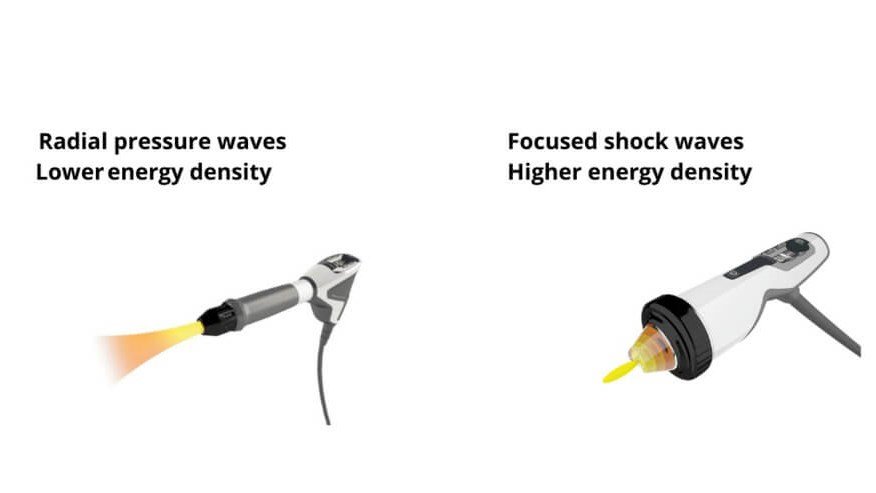Linear Shockwave vs Radial Shockwave - Does it matter?
Shockwave is popular. I make a decent living giving men the ability to have sex again. It is a satisfying career and more and more docs want to get in on it. A lot of them are doing it wrong. In any craft, the quality of tools we use makes all the difference. Lately, I see a lot of doctors using radial shockwave to treat moderate to severe ED. I recently saw a home device for $899 that promised to do the same thing as medical grade shockwave devices. The market is getting a little saturated and with that comes misinformed providers, and downright fraud.
How well shockwave therapy works depends a mostly on the quality of the machine. It is quite easy to learn how to apply shockwave, but most doctors do not want to fork over $100,000 or more for a shockwave device. The Alma Duo, which I use, has an MSRP of $220,000. I am proud to be the first doctor in the PNW to have one. Sadly, most doctors are using cheap radial acoustic shockwave devices that cost $4000 - $8000 and they simply will not provide much benefit.
Is radial shockwave really that much less effective than focused (sometimes called linear) shockwave? Yes. It really is. The vast majority of studies showing the efficacy of shockwave for ED were done using the Israeli made Omnispec ED1000, which is marketed is the US as the Medispec ED1000, and licensed to Alma for their DUO device. These are all essentially the same machine. The PiezoWave2 also has a couple good studies. Anything other than these machines is not supported by robust research. There is only one published study using radial shockwave for ED, and it was only useful for mild ED.
I have both devices in my practice. I mostly use radial shockwave for treatment of plantar fasciosis, tendonitis, and other musculoskeletal issues. It works quite well for that. I have used radial shockwave for ED in the past, but it is only effective for moderate to severe cases when combined with the P-shot, and it is quite painful, requiring the use of a numbing cream before hand.
Focused shockwave has been a delight to use. It is fast, powerful, and does not sting the skin (so no numbing cream needed). More importantly, it works without the use of the P-shot for most patients. This saves them time and money, which they seem to appreciate.
The key difference, scientifically, is that radial head shockwave devices create a shockwave that spreads out and dissipates as it leaves the device. With focused shockwave, it become more powerful as the shockwaves come together (like sunlight through a magnifying glass). This creates greater power and greater depth of penetration. Also, because the energy is focused (not scattered) it doesn't "slap" the skin, so there is no pain with focused shockwave.
I recently had a patient treated at a clinic in Seattle, where they used radial shockwave. He paid $2400 which was a bit less than the price I quoted him for his treatment. Unfortunately, it did not work at all, and he had to come back and get treatment with me anyways. It seems like a good deal, but it is money down the drain. Fortunately, focused shockwave worked quite well and he is happy with his results.
Here is a list of questions to ask when you have a consult, to ensure you get optimal treatment.
Do you use radial or focused shockwaves? What is the name of the device you use?
How many treatments have you done? How long have you been doing this? You want a provider with a least 2-3 years experience doing shockwave therapy.
Do you also offer the P-shot, testosterone therapy, and medication management, in case I need more intensive treatment?
Do you screen for low testosterone, nutrient deficiencies, and diabetes? If so, can you manage them optimally to ensure I get the best results possible?
If they can answer all of these questions correctly, then you have likely found a good provider and will get the best results possible. If you want to save yourself the trouble, head to SageMED for your free consult and let's get you going again.

